Spring 2014
History and Culture in Plants
by Ali Kayn
"The Royal Botanic Gardens is dedicated to the conservation, display and enjoyment of plants and extends over two locations, Melbourne and Cranbourne, and incorporates the National Herbarium of Victoria and the Australian Research Centre for Urban Ecology, which is based at The University of Melbourne."
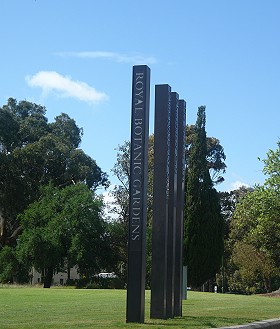
A traditional place to meet in Melbourne is under the clocks at Flinders Street Station. Cross the Yarra River from Melbourne's central district, to the right is Southbank with its galleries, theatres and shops. To the left is a group of established gardens: Queen Alexandra Gardens (with the Pioneer Women's Memorial), King's Domain (with the Shrine of Remembrance), and the Royal Botanic Gardens Melbourne (RBG).
Established in 1846 by Lieutenant Governor Charles La Trobe, the over 38 hectares of gardens rise up from Alexandra Parade and the Yarra River to Birdwood Terrace and the level of Saint Kilda Road. This gives the gardens many levels to spread across, but can be a little daunting for the less able.
Throughout the gardens broad bitumen paths make movement for visitors and staff alike possible. Some additional footpaths exist within the collections. The gardens contain more than 10,000 species of plants from around the world.

A popular place to start a visit to the RBG is to alight from a tram on Domain Road and enter through the Visitor's Centre which lies amongst the buildings of the historic observatory, known as Observatory Plaza.
The Melbourne Observatory is over 150 years old.
Education Programmes
Leaving the Southern Cross Lawn area, the next major feature is the Children's Garden.
"The Royal Botanic Gardens offers a range of education programs that aim to foster a life-long appreciation of plants and the natural world and an understanding of how our actions impact on nature." In Floreo #27 Autumn 2013 (the RBG's magazine) Education Co-ordinators Mick Robertson and Chris Joy said that their aim is "to build greater connectedness to nature in schoolchildren and therefore establish the foundations of attitudinal change".
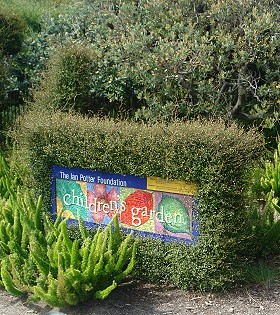
"We like to teach about sustainability." Chris says, "But looking more broadly, what we're trying to do is really to connect people powerfully to nature around them. We say that people are part of nature and that by giving them a powerful bond to nature around them, that's going to build up a strong connection with nature and they'll be more motivated to look at ways to live more sustainable lives."
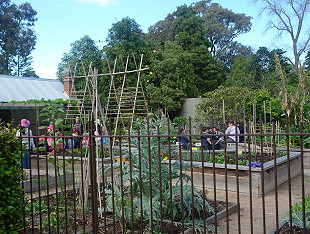
"Generational change would be good, we'd like a bit of that", Mick says, Australia could become a leader in that field and that would have all sorts of benefits at social, environmental and economic levels, so that's what we'd like to see ."
"We're teaching students in Australia about carbon change, carbon sequestration, through trees, and the carbon market, through offsetting in schools here. And we're teaching a little about the climate of the social justice of climate change. Students here are paying for their emissions from technology, from their laptops, iPads and mobile phones, by offsetting them through the WithOneSeed Computer Emissions Fund, which directs money to the Community Tree Co-operatives to maintain regenerated forests."
The education programme includes topics such as sustainable gardening, climate change, water conservation, plant biodiversity, art and culture and indigenous culture. (for more: www.rbg.vic.gov.au/education)
National Herbarium of Victoria
Gardens director Ferdinand von Mueller was appointed Victoria's first Government Botanist in 1853, the same year he established the National Herbarium of Victoria.
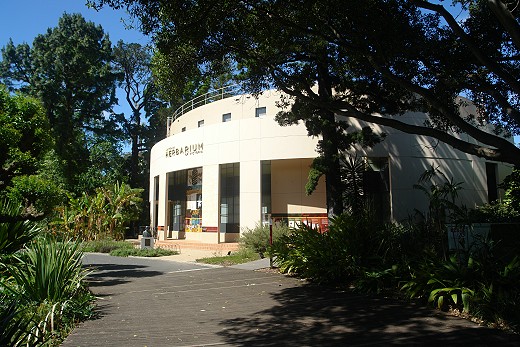
National Herbarium of Victoria
The National Herbarium of Victoria is the Victorian Government's major centre for botanical studies in plant identification, collection and classification. It houses the State Botanical Collection, approximately 1.2 million dried specimens of plants, fungi and algae from Australia and many other countries.
The Victorian Conservation Seedbank is one of seven seed banks in Australia that contributes to the Millennium Seed Bank Project based at Wakehurst Place in the United Kingdom.
Von Mueller was succeeded in 1873 by William Guilfoyle, whose vision shaped the Gardens to their current form. He is responsible for Fern Gully, rockeries, shelters, The Temple of the Winds and the ornamental lake. The restoration of his volcano is part of the Garden' water management programme.
The Lawns
Of the 38 hectares of landscaped gardens at RGB Melbourne, there are 13.6 hectares of lawn that need to be mown.
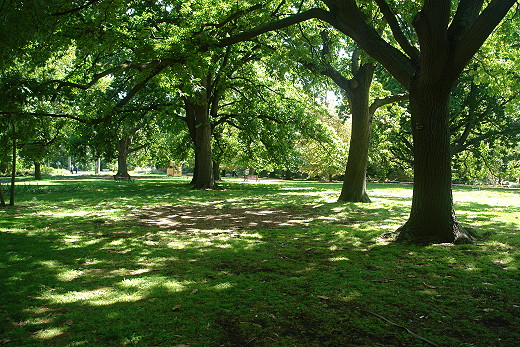
Royal Botanic Gardens, Melbourne, Oak Lawn (c) Ali Kayn 2013
The map of lawns is clickable. Use it to see more photographs of RBG's lawns.
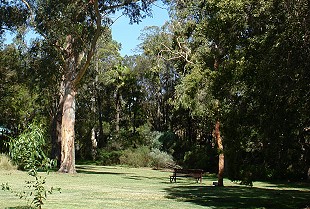
The Eucalypt Lawn (left).
There are over 800 species of Eucalypts across the Australia. Some of these species can be seen in the Gardens. This lawn is one of the many spaces where individuals and families can sit and enjoy the greenspace, so close to the city centre.
The National Trust Significant Tree Register lists 22,000 trees (including individual specimens, avenues and stands), of these, 37 trees are at RGB Melbourne.
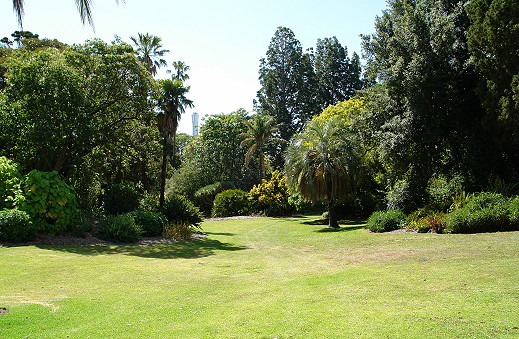
Royal Botanic Gardens Melbourne, Guilfoyle Lawn Eureka Tower in the background (c) 2009 Ali Kayn.

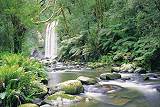

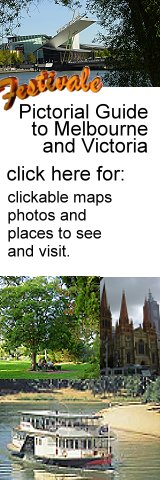
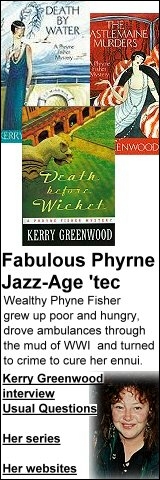





 Published in Melbourne, Victoria, Australia
Published in Melbourne, Victoria, Australia